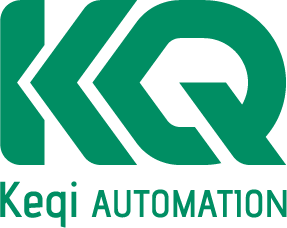Understanding Rotary Ejectors: Enhancing Efficiency in Packaging Machinery
Release time:
2025-08-12
Source:
Rotary ejectors play a vital role in the manufacturing and packaging machinery sector, particularly in the realm of automated processes. These devices are designed to facilitate the efficient removal of products from molds or containers, ensuring a smooth workflow in various packaging applications. Understanding how rotary ejectors operate can significantly enhance the efficiency of your productio
Rotary ejectors play a vital role in the manufacturing and packaging machinery sector, particularly in the realm of automated processes. These devices are designed to facilitate the efficient removal of products from molds or containers, ensuring a smooth workflow in various packaging applications. Understanding how rotary ejectors operate can significantly enhance the efficiency of your production line.
At their core, rotary ejectors utilize a rotating mechanism to push or pull items out of a designated area. This mechanism is typically powered by an electric motor that drives a series of arms or levers, which engage with the products to facilitate their transfer. The design of rotary ejectors allows for quick and precise action, reducing the time spent on product handling and minimizing the risk of damage during the process.
One of the significant advantages of rotary ejectors is their ability to handle a variety of products, including delicate items that require gentle handling. Their adjustable settings can accommodate different product sizes and shapes, making them versatile for various packaging requirements. This adaptability can lead to improved operational efficiency, as manufacturers can switch between products without extensive downtime for reconfiguration.
Additionally, rotary ejectors contribute to a more automated and streamlined production environment. By integrating these devices into packaging machinery, manufacturers can reduce reliance on manual labor, which not only enhances safety but also allows for better allocation of human resources to more critical tasks. Moreover, the automation provided by rotary ejectors can lead to increased throughput, as they can operate continuously with minimal interruption.
In the context of sustainability, rotary ejectors can also play a role in waste reduction. By improving the accuracy of product ejection, these devices can help minimize product losses due to mishandling or misalignment, thereby contributing to a more efficient use of materials. This efficiency is increasingly important as industries look to reduce their environmental footprint while maintaining productivity.
In conclusion, rotary ejectors are an essential component in manufacturing and packaging machinery, offering numerous benefits that enhance operational efficiency, versatility, and sustainability. As businesses continue to seek innovative solutions to improve their processes, understanding the functionality and advantages of rotary ejectors can help in making informed decisions that drive success in the competitive landscape of manufacturing. Emphasizing the importance of these devices in optimizing production lines can lead to significant improvements in overall performance and output.
At their core, rotary ejectors utilize a rotating mechanism to push or pull items out of a designated area. This mechanism is typically powered by an electric motor that drives a series of arms or levers, which engage with the products to facilitate their transfer. The design of rotary ejectors allows for quick and precise action, reducing the time spent on product handling and minimizing the risk of damage during the process.
One of the significant advantages of rotary ejectors is their ability to handle a variety of products, including delicate items that require gentle handling. Their adjustable settings can accommodate different product sizes and shapes, making them versatile for various packaging requirements. This adaptability can lead to improved operational efficiency, as manufacturers can switch between products without extensive downtime for reconfiguration.
Additionally, rotary ejectors contribute to a more automated and streamlined production environment. By integrating these devices into packaging machinery, manufacturers can reduce reliance on manual labor, which not only enhances safety but also allows for better allocation of human resources to more critical tasks. Moreover, the automation provided by rotary ejectors can lead to increased throughput, as they can operate continuously with minimal interruption.
In the context of sustainability, rotary ejectors can also play a role in waste reduction. By improving the accuracy of product ejection, these devices can help minimize product losses due to mishandling or misalignment, thereby contributing to a more efficient use of materials. This efficiency is increasingly important as industries look to reduce their environmental footprint while maintaining productivity.
In conclusion, rotary ejectors are an essential component in manufacturing and packaging machinery, offering numerous benefits that enhance operational efficiency, versatility, and sustainability. As businesses continue to seek innovative solutions to improve their processes, understanding the functionality and advantages of rotary ejectors can help in making informed decisions that drive success in the competitive landscape of manufacturing. Emphasizing the importance of these devices in optimizing production lines can lead to significant improvements in overall performance and output.

